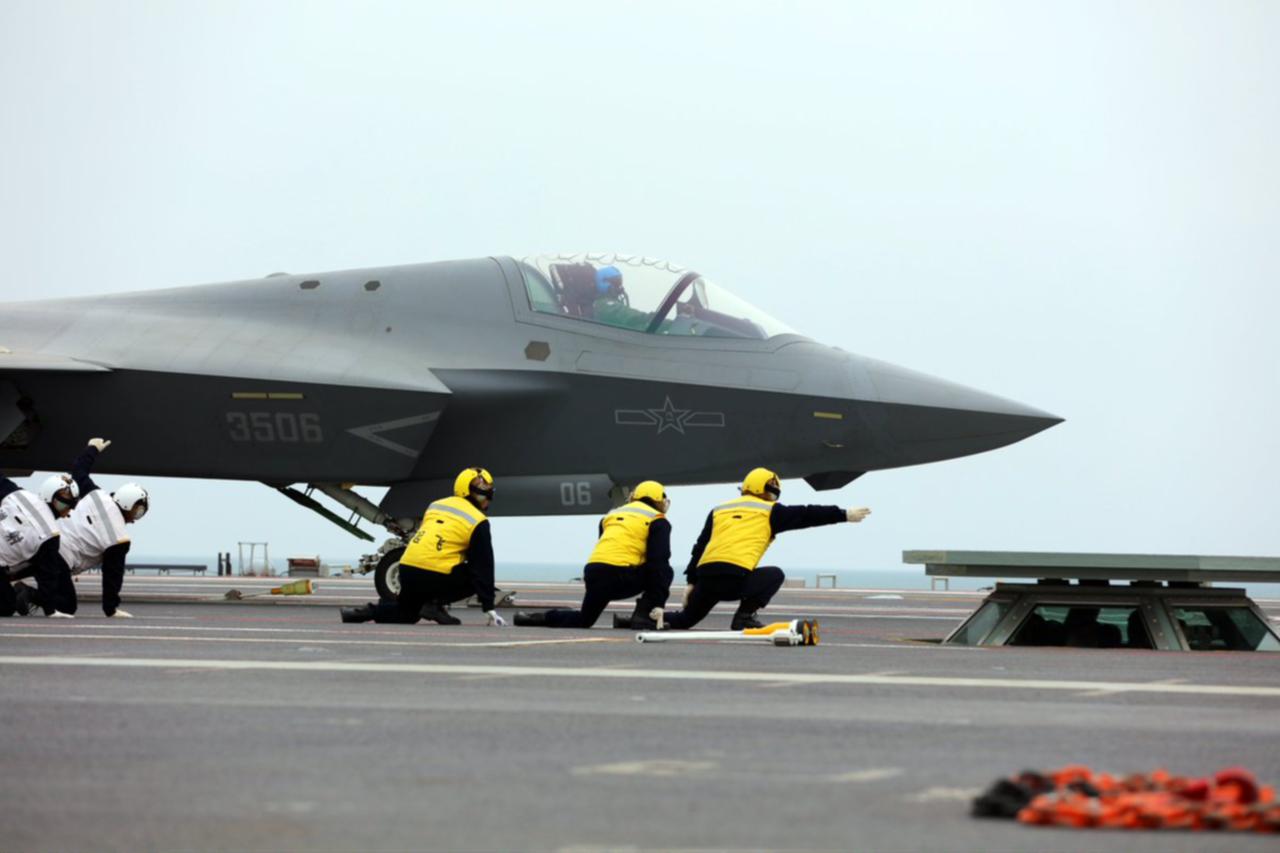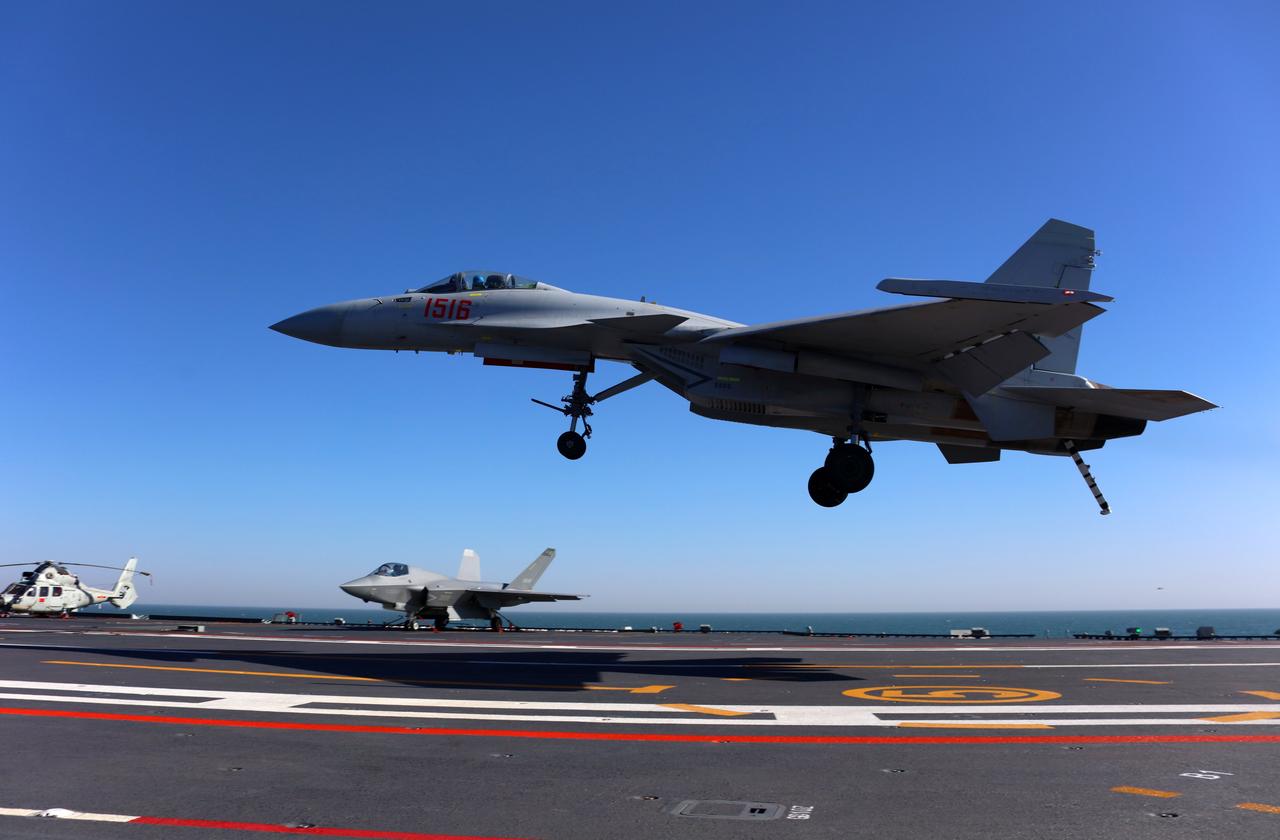
China has successfully launched its J-35 stealth fighter, J-15T fighter, and KJ-600 radar plane from its newest aircraft carrier, Fujian, using electromagnetic catapult technology, marking a significant advancement in the country's naval aviation capabilities.
The Chinese People's Liberation Army Navy released footage Monday showing all three aircraft conducting catapult-assisted takeoffs and arrested landings on the Fujian, China's first carrier equipped with electromagnetic aircraft launch systems (EMALS).
State broadcaster CCTV called the tests a "breakthrough" in carrier development and a "milestone" in China's naval transformation.

The J-35 becomes the first stealth fighter globally to be launched using electromagnetic catapult technology, ahead of the U.S. Navy's F-35C, which has not yet been launched from the USS Gerald R. Ford despite the American carrier being operational since 2022.
The USS Gerald R. Ford is currently the only other aircraft carrier worldwide equipped with EMALS technology.
Carl Schuster, a former U.S. Navy captain, speaking to CNN on Tuesday, said the successful tests mean the Fujian's commissioning into the PLAN fleet "could be only a few weeks away."

The undated videos show all three aircraft types being prepared for catapult launch, taking off, and making arrested recoveries. Aircraft were also shown flying in formation with a J-15D electronic warfare variant.
"This indicated that Fujian has achieved initial full-deck operational capability, allowing different types of carrier-based aircraft to join its operations," the Chinese Navy said on the Defense Ministry website.
The J-15T is a catapult-capable version of China's carrier fighter, developed from the Soviet-era Su-33. The J-35 is a next-generation stealth fighter designed specifically for catapult-assisted takeoff and landing (CATOBAR) operations.
The KJ-600 early warning aircraft, similar to the U.S. Navy's E-2 Hawkeye, can only operate from catapult-equipped carriers.
Chinese maritime expert Hu Bo called the development "a huge milestone" on X, stating that the Chinese Navy now "has an aircraft carrier group that can compete with any opponent in the far sea."
The Fujian, unveiled in June 2022, is China's largest warship and its third aircraft carrier, following the Liaoning and Shandong, both of which utilize ski-jump launch systems rather than catapults.
The carrier has been conducting sea trials since May 2024, with earlier footage showing J-15 fighters on deck; however, there is no clear evidence of launch and recovery operations to date.

The development comes as a U.S. Congressional delegation visits Beijing for talks on military communication.
Representative Adam Smith, leading the delegation, told reporters Tuesday that military-to-military relations between the U.S. and China are of "particular concern."
"China is the most rapidly growing military and the most rapidly growing nuclear power in the world," Smith said.
"It is dangerous for us not to have regular communications about our capabilities and intentions."
During meetings with Chinese Defense Minister Dong Jun, Smith emphasized the importance of maintaining open communication lines on military matters.
Dong called on U.S. lawmakers to "remove disruptive and restrictive factors" in military relations, according to Chinese state media.
China is reportedly working on its next carrier, the Type 004, which may be nuclear-powered.
The expanding carrier force reflects China's strategic ambitions for regional missions, including potential Taiwan intervention and blue-water operations in the Pacific.
Electromagnetic catapults offer several advantages, including the ability to fine-tune for different aircraft types and shorter reset times, resulting in increased sortie rates.
The technology also enables operations of smaller drones and uncrewed platforms, which the People's Liberation Army Navy (PLAN) is developing for carrier operations.
The Fujian is expected to enter operational service by the end of 2025, according to military analysts.